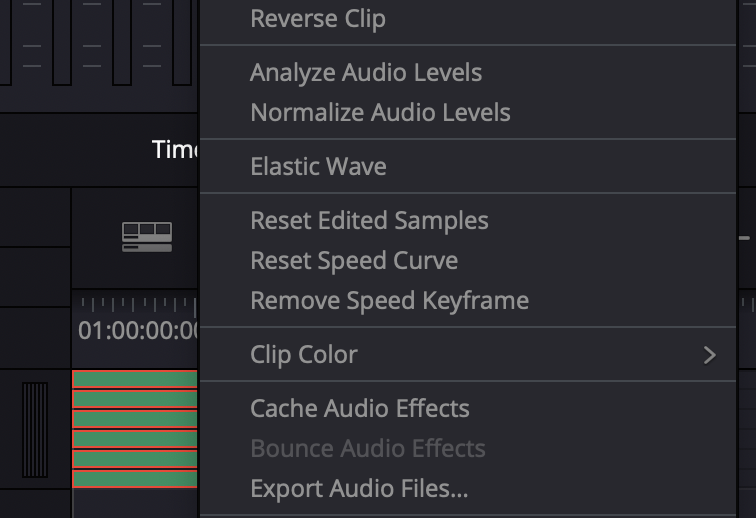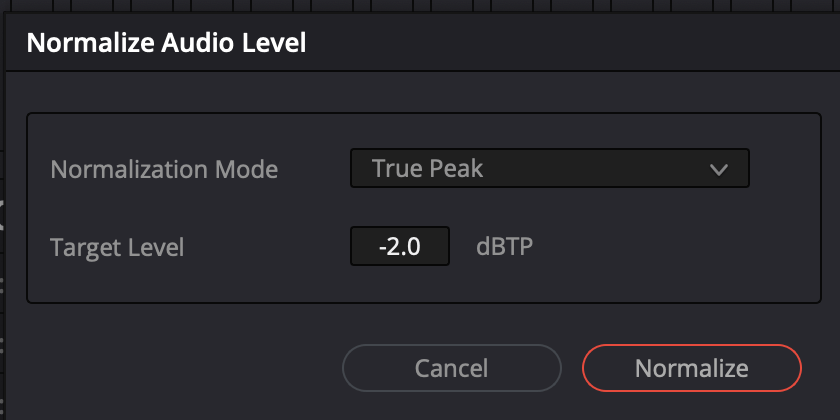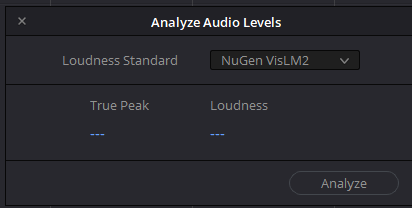The Netflix loudness level
Netflix published their Sound Mix Specifications & Best Practices in 2018, now updated to version 1.5. The “Netflix loudness level” is currently supported in DaVinci Resolve’s Fairlight and the Nugen Vislm 2 plugin for both Resolve and Pro Tools.
Netflix Loudness Standards
Netflix has established a standard dialogue-gated loudness level of -27 LKFS (±2) with a maximum true peak of -2. This standard was chosen because it aligns with many existing film mixes.
Measuring Dialogue Levels
Netflix uses the Dolby algorithm (dialnorm) for measuring dialogue-gated 1770 LUFS/LKFS loudness. This differs from program-gated loudness (1770-3/4/EBU R128) as it specifically measures dialogue rather than overall program content.
Special Cases:
For films with less than 15% dialogue, Netflix recommends:
- -24 LKFS program-gated loudness (±2 ITU BS 1770-3)
Loudness Range (LRA) Requirements:
- 5.1 programs: 4-18 LRA
- Dialogue: Maximum 10 LU
Note: Theatrical mixes often exceed these ranges
Mixing Room Specifications
- Small near-field rooms used for Netflix: Calibrated to 79 or 82 dB SPL with minimal X-curve with dry acoustics (Less reverberation time)
- Larger mixing rooms used for Cinema : Calibrated to 85 dB SPL with standard/modified X-curve often with wetter acustics. (More reverberation time)
- Room acoustics can impact how the the mix will sound.
Comparison with YouTube
YouTube’s standard (-14 LKFS, max peak -1):
- More limited dynamic range than Netflix or theatrical mixes
- Automatically reduces louder content to meet standards
Key Observations from Theatrical DCPs:
DCPs are mixed for the 85 dB SPL standard. There is no loudness setting for an 85 dB SPL theatre sound mix in Resolve and loudness plugins. But the Netflix loudness level can be used as a reference.
- Theatrical mixes also typically maintain -27 LKFS (±2)
- Dialogue levels vary by country and genre
- Drama films often have lower dialogue levels compared to action films. Read more about different Loudness levels in DCPs in this post.
Netflix vs. Theatrical Standards
Netflix’s 1.4 specification is more structured than theatrical standards but remains closest to theatrical mixing approaches because it:
- Preserves dynamic range
- Uses similar room calibration standards
- Specifyes the acoustic environment
Room Acoustics Considerations
- Near-field rooms: Typically dry acoustics
- Cinema spaces: More reverberant
- Reference: ITU-R BS 1116-3 for reverberation measurement standards
Measuring the Netflix loudness level in Resolve
In the Fairlight module in Resolve
Right-click the audio
Choose Analyze audio

Choose the loudness standard Netflix and click analyze
Result
Integrated -26.7. Dialogue 39 percent.
True Peak -0.1 dBFS.
(It does not measure LRA)

Normalizing the Netflix Loudness Level in Resolve
If I want to lower this to True Peak -2 and a Netflix Loudness level -28.6 I use Normalize Audio Levels.

Close Normalize Audio Levels
Right-click the audio and choose
Normalize Audio Levels
Normalization Mode = True Peak
Target level = -2 dBTP
and then click Normalize

Measuring the Netflix loudness level in the Vislm plugin
You can measure the Netflix Loudness level in Nugen Vislm 2 plugin in Resolve and Pro tools Ultimate. The Vislm plugin also measures program LRA and dialogue LRA.
In Resolve
In the Fairlight module in Resolve – Set Netflix 5.1 as the default
Drag the Nugen VisLM2 VST effects to the 5.1 sound track and choose
Options – 12 Netflix 5.1
Choose current as the default
Analyze the audio
Right-click the audio
Choose Analyze audio
Choose Nugen VisLM2 or Insight and click Analyze

Results:
Integrated (dial) -26.7. (40%)
LRA 19.8,
LRA (dial) 14.1,
True Peak (TP) (max) -0.1

In Pro Tools Ultimate
- Add track
- Track- new
- 5.1
Drag the 5.1 mix to the 5.1 track
- Click on the 5.1 track
- Audiosuite – Sound Field – Nugen Visml2
- Click on options and choose Netflix 5.1
- Loudness
- Analyze
How does this NETFLIX metering system compare to what youtube uses?
EBU R128 -23 would appear to be 9 dB quieter than the -14dB that Youtube apparently limits to. But I’m wondering if the NETFLIX meter has different ballistics that make it respond differently.
Do you consider youtube (and other platforms) as a “wild west” compared to the fairly strict film industry or has that changed in recent years?
The Youtube loudness of -14 LKFS with max peak at -1 can’t reach the same kind of dynamic range as a Netflix mix, theatrical mix or -24 program gated mix. Youtube only lowers mixes that are too loud to that level, so instead of lowering the dynamics of a mix to achieve -14 you can keep at a lower level.
The Netflix 1.4 specification has more strict rules and recommendations than a theatrical mix:
But it is the closest neighbor to a theatrical mix because it was made to preserve dynamic range compared to program gated loudness standards like EBU R128.
The Netflix 79/82 dbc near field mixing room is similar to an 85 dbC cinema. How wet/dry the auditorium is important for how a theatrical mix will sound. Rec. ITU-R BS 1116-3 has more info on how reverberation time is measured in small and large rooms. Larger room can have more reverberation time, near-field mixing room typically have no reverberation time and a dry sound, while most cinemas have more reverberation time and a wetter sound.
For -14 Youtube loudness mix the -20 RMS pink noise at fader level 0 would be set to a lower dbC than 79/82/85.
The Netflix dialogue gated loudness = -27 (+/-2) can fit both 82 and 85 dBC levels, drama films can be lower in theatrical mixes. In a youtube mix this would be higher.
The Netflix dialogue recommended loudness range (LRA) of 10 LU or less. in a theatrical mix this can be more, but in youtube mix it would be less.
The Netflix 5.1 recommended program LRA can be between 4 and 18 LU. in a theatrical mix this can be more, but in youtube mix it would be less.